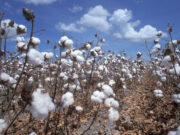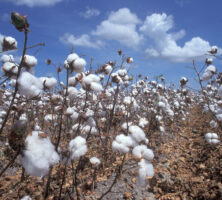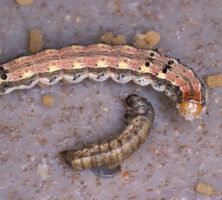Cotton was ranked second in Georgia’s top ten agricultural commodities for 2007, in terms of farm gate value (the value of the product when it leaves the farm). Farmers, primarily in the southern half of the state, raised 1.66 million bales of cotton that generated more than $600 million in farm gate value. (Peanuts were ranked seventh, with approximately $382 million, and tobacco was twenty-seventh, with around $65 million.)
Grown in seventy countries around the world, cotton is also an essential commodity in the global economy. Through the development of cotton plants that are resistant to both insects and herbicides, advances in genetic engineering offer cotton producers ways to increase cotton yield and quality, decrease the cost of production, and limit damage to the environment. Genetically modified (or transgenic) cotton plants are particularly important to Georgia. In 2004 transgenic cotton plants accounted for 95 percent of all cotton grown in the state.
Insect-Resistant Cotton
Insects and arachnids are a significant obstacle to the production of cotton. Such pests as bollworms, budworms, boll weevils, and spider mites feast on the cotton and destroy the crops, resulting in the loss of millions of dollars. Although some cotton growers use pesticides in an attempt to control this problem, the chemicals are often harmful to the environment and very expensive, so a safer method is desirable.
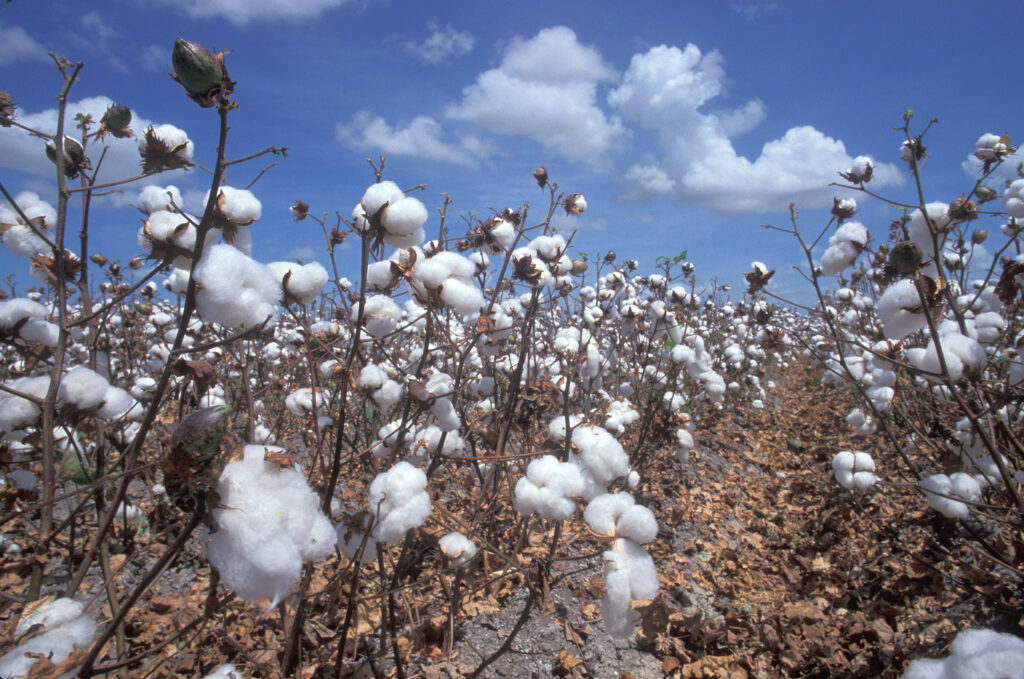
Courtesy of Agricultural Research Service, U.S. Department of Agriculture
The genetic engineering of transgenic cotton plants has been employed commercially to protect the crops against pests since 1996. Researchers are able to take a gene from the bacterium Bacillus thuringiensis (Bt), which encodes an insecticidal protein, and insert it into the cotton genome to produce a transgenic cotton plant. Bt is a very potent toxin and is also highly specific toward insect pests. Equally as important, the U.S. Environmental Protection Agency considers Bt exposure to be safe for nontarget insects, humans, and other animals. The transgenic insect-resistant cotton plant exhibits characteristics of the Bt toxin, meaning that the plant is poisonous to the same insects as the Bt toxin. When this is done on a large scale, millions of transgenic cotton plants can be commercially produced.
Although the genetic engineering of cotton plants is a technology with significant potential, it is not always completely effective. Sometimes the Bt gene is not properly expressed in the cotton plant, so the plant does not become resistant to insects. In addition, insects that are not affected by the Bt toxin are still able to feed on the cotton plants, and some insects develop a resistance to the toxin over time.
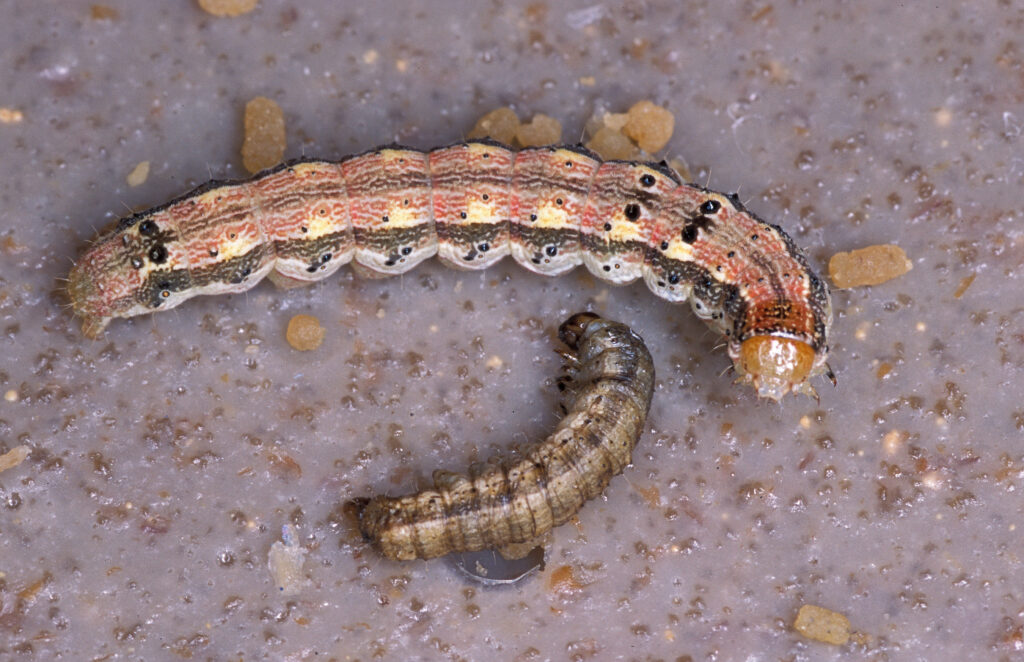
Courtesy of Agricultural Research Service, U.S. Department of Agriculture
Efforts to find solutions to these problems are ongoing. Researchers with the Department of Entomology at the University of Georgia in Athens developed a method, published in 2003, that diminishes the ability of budworms to resist Bt. In a process known as gene stacking, the scientists introduced several different Bt components at once into cotton plants in a manner that increased the concentration of Bt but did not interfere with the plant’s normal functions. The budworms were unable to resist the higher concentrations of the toxin.
Herbicide-Resistant Cotton
Another problem in cotton farming arises with the use of herbicides. Weeds and other nonessential plants hinder the growth of cotton crops by competing for water, nutrients, and available sunlight. The weeds also increase the trash content of the harvested cotton fiber, reducing cotton yields and increasing the costs of cotton farming.
To avoid this problem, farmers employ a number of techniques, including crop rotation, dry mulch, hand weeding (the physical removal of weeds from fields), and herbicides. The Economic Research Service of the U.S. Department of Agriculture reported in 1999 that 97 percent of all U.S. cotton farmland is treated with herbicides in the battle to control problematic weed species. Herbicide costs are high: U.S. farmers spend approximately $300 million annually on these chemicals. But the growers still lose about $360 million each year from lower crop yields because the herbicides often kill cotton plants as well as weeds.
During the 1990s scientists began engineering cotton plants that were resistant to herbicides, and by 1996 seeds for genetically modified cotton were commercially available. Cotton plants cultivated from these seeds are immune to a specific type of herbicide, so when that particular herbicide is sprayed on a field, the cotton plant will not be unintentionally killed. By 2009 scientists had engineered cotton plants with resistance to four commonly used herbicides: bromoxynil, gluphosinate, glyphosate, and imidazolinone. These resistant plants allow farmers in Georgia and elsewhere to continue using herbicides and still receive high crop yields.


